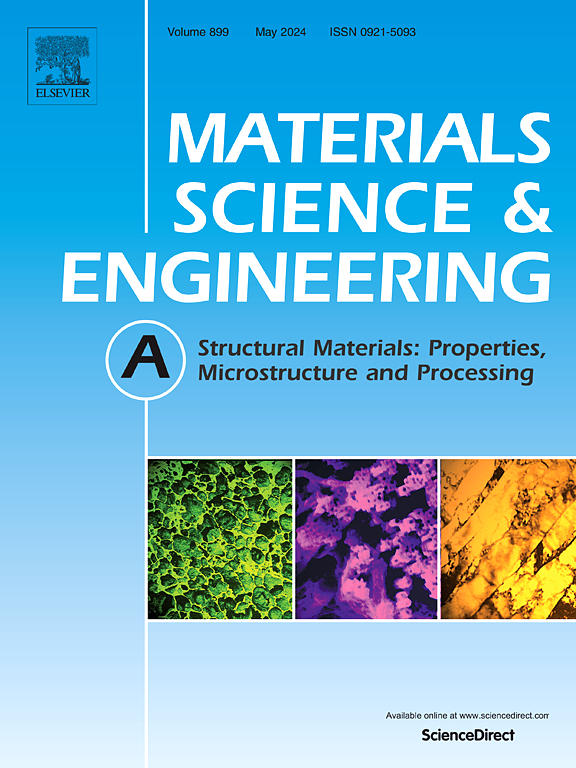Twinning and kinking behaviors of α-uranium under high strain rate compression
IF 6.1
2区 材料科学
Q1 MATERIALS SCIENCE, MULTIDISCIPLINARY
引用次数: 0
Abstract
Uranium (U) and its alloys are frequently subjected to dynamic deformation during their applications in nuclear industry. Owning to the low-symmetry crystal structure of α-U (the allotropic form of uranium stable up to 940 K), twinning and kinking play critical roles in its dynamic plastic deformation. However, the twinning and kinking behaviors of α-U under dynamic deformation have not yet been fully understood. In this work, we employed a split Hopkinson pressure bar (SHPB) to dynamically compress coarse-grained α-U to strains of 5%, 15%, 25%, and 27%. The resulting twin and kink bands were characterized using electron back-scatter diffraction (EBSD). Our results reveal that both the width and density of twins increase with increasing impact strain. Four types of twins were identified: {130}, , {112}, and . Kink bands emerged after 15% impact strain, with their boundaries perpendicular to the [100] direction of matrix and their [100] directions oriented at a 45° angle relative to that of matrix. The {130}, , and {112} twins were observed within the kink bands, and the {112} twins inside the kink bands were found to initiate secondary {130} twin. Fine and randomly oriented grains were observed inside the adiabatic shear bands of α-U. Based on these findings, we propose a twin-induced rotational dynamic recrystallization to describe the formation of adiabatic shear band in uranium. This study provides new insights into the plastic deformation mechanisms of uranium under dynamic loading.
α-铀在高应变率压缩下的孪晶和扭结行为
铀及其合金在核工业应用过程中经常受到动态变形的影响。α-U(铀的同素异形体,稳定温度可达940 K)由于其低对称晶体结构,孪晶和扭结对其动态塑性变形起关键作用。然而,α-U在动态变形作用下的孪晶和扭结行为尚不完全清楚。在这项工作中,我们采用分离式霍普金森压力棒(SHPB)动态压缩粗粒度α-U至5%,15%,25%和27%的应变。利用电子背散射衍射(EBSD)对所得到的孪带和扭结带进行了表征。结果表明,孪晶的宽度和密度随冲击应变的增大而增大。确定了四种类型的双胞胎:{130}、{17 2}、{112}和}{17 6}。15%冲击应变后出现扭结带,其边界垂直于基体[100]方向,[100]方向与基体成45°角。在扭结带内观察到{130},{17}2}和{112}的双胞胎,并且发现扭结带内的{112}双胞胎引发次级{130}双胞胎。在α-U绝热剪切带内观察到细小且随机取向的晶粒。基于这些发现,我们提出了双诱导旋转动态再结晶来描述铀中绝热剪切带的形成。该研究为铀在动载荷作用下的塑性变形机制提供了新的认识。
本文章由计算机程序翻译,如有差异,请以英文原文为准。
求助全文
约1分钟内获得全文
求助全文
来源期刊

Materials Science and Engineering: A
工程技术-材料科学:综合
CiteScore
11.50
自引率
15.60%
发文量
1811
审稿时长
31 days
期刊介绍:
Materials Science and Engineering A provides an international medium for the publication of theoretical and experimental studies related to the load-bearing capacity of materials as influenced by their basic properties, processing history, microstructure and operating environment. Appropriate submissions to Materials Science and Engineering A should include scientific and/or engineering factors which affect the microstructure - strength relationships of materials and report the changes to mechanical behavior.
 求助内容:
求助内容: 应助结果提醒方式:
应助结果提醒方式:


